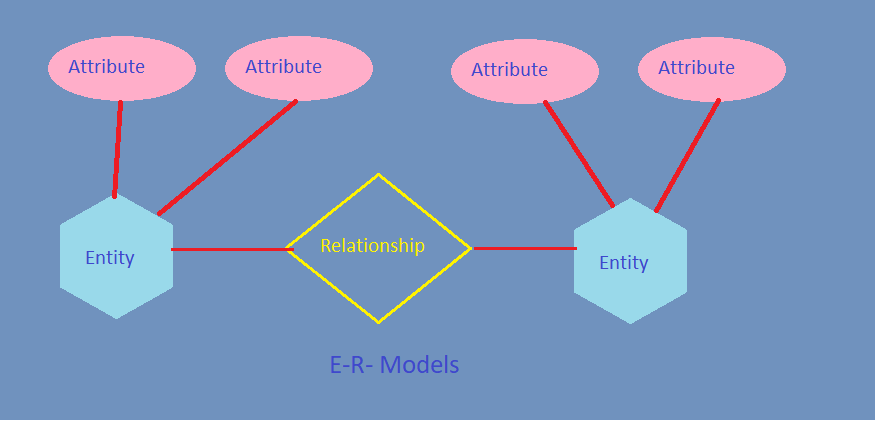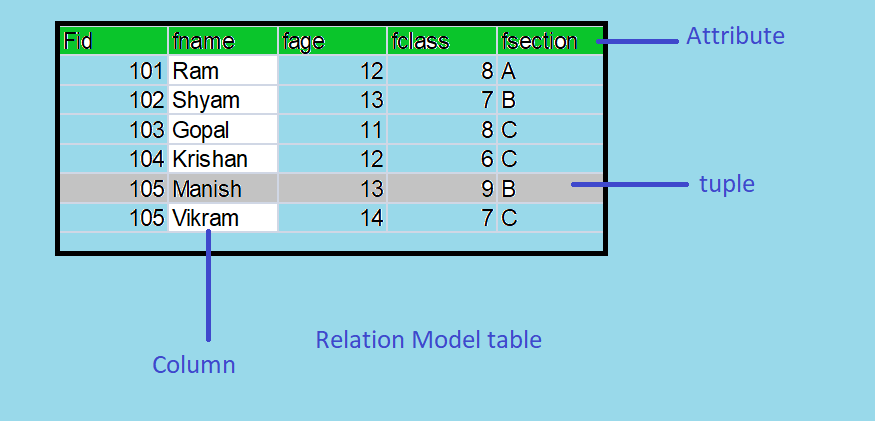Data models-: These models are- a collection of conceptual tools for describing data, data relationship,data semantics and data constraints. in other words we can say that the Data models define how data is connected to each other and how they are processed and stored inside the system.
Data Models are categorized into the following –
1. E-R-Model -: Full name of E-R-Model is the Entity Relationship Model.

It’s Based on a perception of the world as consisting of a collection of basic object and relationship among these object.
- An entity is a distinguishable object that exists..
- Each entity has associated with it a set of attributes describes it.
- E.g. number and balance for an account entity
- A relationship is an association among several entities.
- The set of all entities or relationship of the same type is called the entity set or relationship set.
- Another essential elements of the E-R-diagram is the mapping cardinalities, which express the number of entities to which entity can be associated via a relationship set.
2.Relation Model-: This Model is very popular.The Relation Model represent the database as a collection of relations. In the formal relation model terminology a row is called a tuple, a column header is called an attribute and the table is called a relation.

Data is stored in tables called relations.Relations can be normalized.
In normalized relations, values saved are atomic values.Each row in a relation contains a unique value.Each column in a relation contains values from a same domain.
3.Hierarchical Model-: The hierarchical data model organized data in a tee structure. There is a hierarchy of parent and child data segments. Parent-child relationship is one to many. This restricts a child segment to having only one parent segment. This structure implies that a record can have repeating information generally in the child segments. Data in a series of records which have a set of field values attached to it. It collect all the instance of a specific records together as a record type. This record types are the equivalent of table in the relation model.
4.Network Model-: The network model is a database model conceived as a flexible way of representing object and their relationship. In this model parent have several children and a child have many parent records.
5.Object Oriented Model-: This model is based on a collection of objects like E-R Model.
- An object contains value stored in instance variable within in the object.
- These value are themselves objects.
- Thus object contain object to an arbitrarily deep level of nesting.
- An object also contains bodies of code that operate on the object.
- These bodies of code are called methods.
- Object that contain the same type of values and the same methods are grouped into classes.
- A class may be viewed as a type definition for object.
- Analogy : the programming language concept of an abstract data type.
- The only way in which one object can access the data of another object is by invoking the method of the other object.
- This is called sending a message to the object.
- Internal part of object the instance variable and method code are not visible externally. Result is two levels of data abstraction.